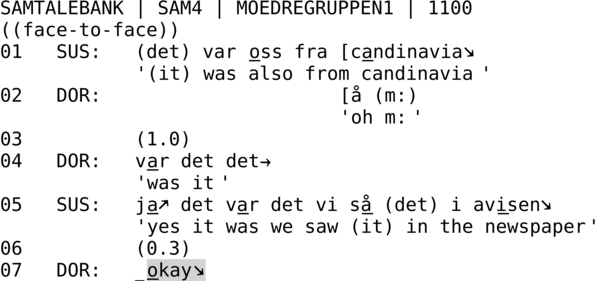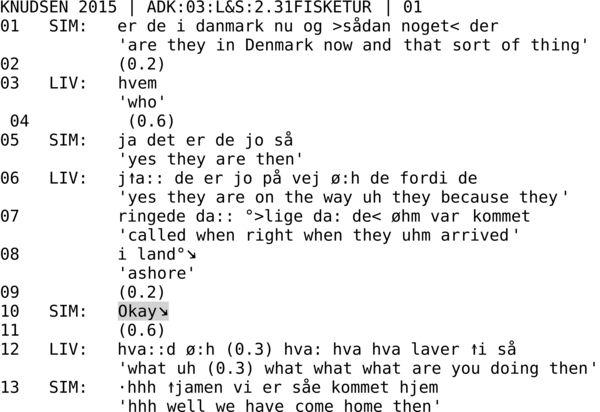Okay with falling intonation
(text is being developed)
In Danish, the word okay exists both as an adjective, an adverb and an interjection. In the spoken language, there are two pronunciations: okay with falling intonation and okay with rising intonation, and the two have different meanings, although this difference is not reflected in the written language. Here we describe the falling okay as an interjection.
In the falling okay, stress is placed on the first syllable, which takes the form of an initially high pitch as well as the first syllable being of higher volume and/or being prolonged.
A falling okay in third position can function as a receipt, for instance for receiving information. This can be seen in line 7 in the following example:

In line 1, Sus informs Dorit that some candy is from a particular candy company, which they have spoken about earlier. In line 4, Dorit asks a question in the form of a request for confirmation, and in the following line Sus confirms with a ja (yes) and explains where she has the information from. Dorit’s okay in line 7 acts as a receipt for the fact that she has received Sus’ confirmation.
Falling okay can occur between topics, where it acts as change-of-topic marker. An example of this can be found in line 10 in the next excerpt, where Simon and Liv speak of one topic before okay and then switch to a completely different topic after okay.

A new topic can also be introduced after a receipt-okay, so in this way, both receipt-okay and topic-changing-okay
Sources and further reading
Knudsen (2015) describes both the rising and falling okay in these functions.
Sørensen & Steensig (2021) describes primarily the rising okay, but as a receipt that is different from the falling okay as receipt.
Relevant entries
The Building Blocks of Talk-in-interaction > Sounds > Prosody
The Building Blocks of Talk-in-interaction > Wordclasses/Parts of speech > Interjections and particles
